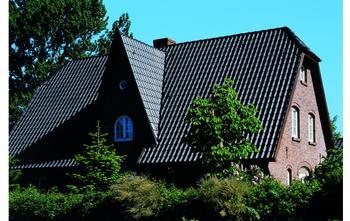Building energy efficiency has become the consensus of the world. At present, Europe and other developed countries have established a relatively perfect civil energy efficiency standards and labeling systems technology. U.S. to build a perfect building "Energy Star" energy Identification System, after years of development, the growing number of consumers are "Energy Star" energy-saving residential building labeling esteem, as the first choice.

"Energy Star" of the two certification
In the "Energy Star" logo building energy systems, building energy certification and operation management of energy certification of buildings are the two priorities.
First, through the structure of the building envelope, heating and air conditioning systems and other thermal insulation performance monitoring to ensure that the building itself is energy-efficient buildings, energy certification of buildings awarded. So far, there are 4,400 commercial building developers and energy service providers become "Energy Star" partner, accounting for 13% of the U.S. construction market, effectively promote the U.S. building energy efficiency.
Second, the operation and management of the energy levels of the building to assess the operation and management of the energy levels higher operation and management of energy-efficient buildings awarded certification. In the long-term energy-saving practice found that although some buildings are equipped with first-class equipment or energy-efficient products, but due to management measures in place, energy and facility managers lack knowledge of other reasons, but not after the completion of optimal operation, serious waste of energy. In order to tap the energy-saving potential, it is necessary to carry out building energy performance evaluation system. To date, a total of 19,000 operational management of buildings energy levels were assessed, including office buildings, schools, supermarkets, hospitals and Hotels respectively accounted for 17%, 11%, 17%, 28% and 6%, with 1700 operation and management of energy-efficient buildings received the "Energy Star" certification.
"Energy Star" to promote the development of building materials
From 1998 began to promote energy efficiency in buildings in the "Energy Star" standards, the U.S. domestic with "Energy Star" standards for the construction of residential mostly adopt new energy saving construction and building decoration materials. The past 10 years, more and more home builders attention to the green building standards. Compared with the traditional residential construction, environmental protection and energy-saving type the number of residential buildings have great growth. A Los Angeles home builders will be energy-saving lamps and solar heating technology to San Diego two energy-efficient residential buildings, so that residential energy consumption than conventional reduced by 75% at the same time retained a lot of green space to plant trees and flowers . Although he built homes priced up to $ 500,000 to $ 1 million, but still favored, very hot.
Currently, energy residential construction projects are in full swing nationwide rise. 2007 survey shows that in 344 builders, 28% of their residential construction projects using the "Energy Star" standards, 22% over the previous year increased by 6 percentage points; in 300 residential consumers, 94% of the people to the builders put forward higher requirements for energy-saving and environmental protection, such as water-saving facilities and reclaimed architectural and decorative building materials. Last year, California has 540 residential and architectural decoration is constructed according to green building standards, water and energy, respectively, 25% and 50%. Washington built 18,000 houses, in accordance with the "Energy Star" standards alone, there are 13,000 to build.
Government economic incentives
The U.S. has been able to fruitfully promote building energy efficiency, the implementation of real estate "Energy Star" building energy Identification System, in addition to legislation, but also in all levels of government and organizations put a lot of funding for the "Energy Star" of promotion work , introduced the key to supporting economic incentive-based policies and measures. Probably practice is as follows:
The first is the cash subsidy. Mostly used for residential buildings, the requirements must be subsidized products through the "Energy Star" certified products. All levels of government and utility organizations invest a lot of subsidy funds to compensate for the increased promotion of building energy costs and expenses.
Followed by tax relief. All new energy-efficient residential buildings, can get tax relief. According to regulations, the period from 2001 to 2003 built house, if the ratio of international energy efficiency standards (IECC standard) save 30% or more, each with tax deductible $ 1,000; 2001-2005 homes built during the event than the international energy efficiency standards 50% energy saving, each with tax deductible $ 2,000.
The third is the low-interest loans. Residents in the purchase after the "Energy Star" Certified Residential, you can offer to some of the "Energy Star" mortgage servicers apply for a mortgage lending institutions, including the return of cash and enjoy low interest, etc., rewards and benefits.